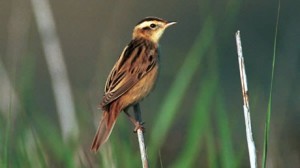
While its name sounds like a creature Luna Lovegood might have made up, this small bird is in fact real, and in need of our help. To date, the Aquatic Warbler is the rarest migratory songbird in Europe and may be the first species to become extinct since the 1900s in Germany. Throughout Europe, the Aquatic Warbler occupies only forty sites in six countries and only four of those sites contain eighty percent of the entire population, with only 10-14,000 males in the entire world.[1] With breeding territory in Germany and Poland, the Aquatic Warbler, a habitat dependent species, has disappeared mainly due to habitat loss and degradation. Being “habitat dependent” means that the species is a specialist and can only survive in particular conditions, unlike a generalist species which can thrive in many different environments. Because of this particularity, the change in environments for the Aquatic Warblers has made them human dependent as well as classified as endangered. Having previously thrived in Germany/”Pomerania” (the border between Germany and Poland), the Aquatic Warbler male population dropped to 55 by 2011. The “Aquatic Warbler LIFE Project”, a project dedicated to “conserving Aquatic Warblers in Poland and Germany” has begun to inform people about the importance of conserving the species and to implement the necessary changes to save the species.[2]
We see birds every day; we can hear them chirping outside out dorm windows all the time, especially when we’re trying to sleep. It is strange to think that the protection of one single, tiny bird could make that big of a difference, particularly one you’ve probably never heard of. But everything in the environment is connected. The Aquatic Warbler is something you can call an “umbrella species,” which means that protecting the Aquatic Warbler will indirectly protect many of the other species in its habitat, whether they are other plants or animals. Aquatic Warblers live in fen mires, a type of wetland habitat, or on wet meadows, which are also the home of many other types of birds such as Black Tailed Godwits and plants such as Orchids. So by improving the fen mire habitats of the Warblers, many other species would be saved as well. However, like all types of wetlands around the world, fen mires have been drained drastically over the last century for either resources or land needed for agricultural expansion. Hundreds of thousands of animal species live in wetlands but environmental degradation is worse in the wetlands than in any other ecosystem on Earth. The downfall of the Aquatic Warblers is representative of the slowly degrading biodiversity of Earth’s ecosystems. But there are things we can do to help.
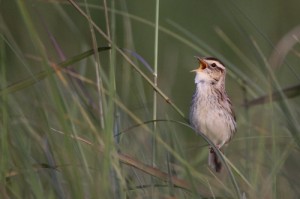
While it may be difficult to take the time to go to your nearest wetland and see what you can do, all environments need help to stay healthy and the species within them can often use an extra hand. By improving the general quality of the air and water, all types of environments benefit, and even outside of the wetlands, there is always work to do.
Reduce the amount of toxins that go into the land: this can mean not supporting the use of pesticides and other chemicals for crops, or simply not littering. Toxins that are washed into storm drains will often eventually reach the wetlands and pollute the water and soil there. Many wetland species such as frogs and birds are highly susceptible to toxins and cannot survive in polluted environments.
Plant native species: invasive species are very detrimental to habitats. In the northwest of the U.S., for example, nonnative blackberry bushes grow rampantly through forests and by water supplies such as rivers and creeks. Their intense growth makes it impossible for the native species to grow in their homes and also decreases the biodiversity of the ecosystem by creating a monoculture. The natural native plants by water are especially important because the soil quality, shade levels, and growth of the plants all affect the water quality and the species with it. So, by removing nonnative species and planting native ones, the quality of an ecosystem can be greatly improved.
Reduce, Reuse, and Recycle: the classic three R’s of being environmentally friendly. By limiting our own amounts of waste, the wastes in the environments around us also decrease.
Volunteer: When it comes to being environmentally friendly, there’s nothing more important than getting involved. Volunteering gives you a chance to work hands on and learn a lot more about the world around you, and it can be very easy to do. Volunteering to go out and count how many birds you see helps wildlife preservationists and other groups know how diverse an ecosystem is. Grab a pair of binoculars and go spend an afternoon in the great outdoors!
The Aquatic Warbler is not the only species to become endangered in Germany, which is why becoming aware of the animals and plants around you is very important. While it’s hard to imagine your dog or cat going extinct, it is happening to animals all around the world due to both natural and human causes. To preserve the beautiful diversity of the earth, take a moment to learn about the species in need and what you might be able to do to help. Simply promoting awareness is a step you can take to saving animals and plants all around the world.
Some of the other species in Germany that are becoming endangered include:
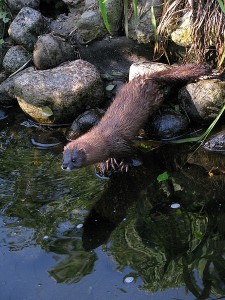
The European Mink – As one of Europe’s most endangered animals, the European Mink has seen decline in population due to the introduction of the nonnative American Mink, loss of habitat, and scarcity of food. Fun fact: European Minks become independent at the age of 70-84 days.[3]
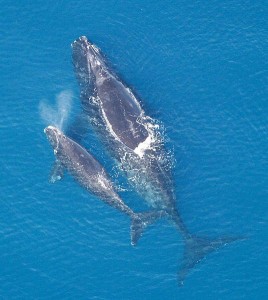
North Atlantic Right Whale – Due to their large amount of blubber and tendencies to feed close to the water surface, North Atlantic Right Whales are easy for whalers to hunt, putting them among the most endangered species of whales in the world. Fun fact: Some North Atlantic Right Whales can live up to a century.[4]
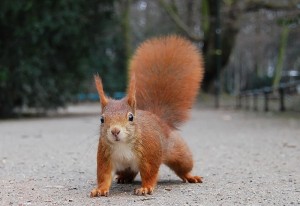
Red Squirrel – The decline of the Red Squirrel is mainly due to the introduction of the Eastern Gray Squirrel and habitat loss. Native to Germany, there are still more Red Squirrels here than in Britain or Italy where they have vastly declined in number. Fun Fact: In Norse Mythology, a red squirrel named Ratatoskr ran up and down the world tree carrying messages.[5]
Even though we don’t see all of them every day, learning about animals is an important step to understanding the natural world around us and how to preserve it. The Aquatic Warbler LIFE Project has now learned about the species’ exact habitat requirements, enabling them to begin working on each specific habitat and improving it. This information is used to improve their management sites and develop new plans of action for Poland and the Brandenburg area of Germany. From the Aquatic Warbler in the sky to the North Atlantic Right Whale in the ocean, and everything in between, animals will always add color and diversity to the world around us. Take some time to get to know that world and you would be already helping to save it.
[1]Retrieved from http://www.aquaticwarbler.net/taw/
[2]Retrieved from http://ec.europa.eu/environment/life/project/Projects/index.cfm?fuseaction=home.showFile&rep=file&fil=LIFE05_NAT_PL_000101_LAYMAN.pdf
[3]Retrieved from http://en.wikipedia.org/wiki/European_mink
[4]Retrieved from http://en.wikipedia.org/wiki/North_Atlantic_Right_Whale
[5]Retrieved from http://en.wikipedia.org/wiki/Ratatoskr
